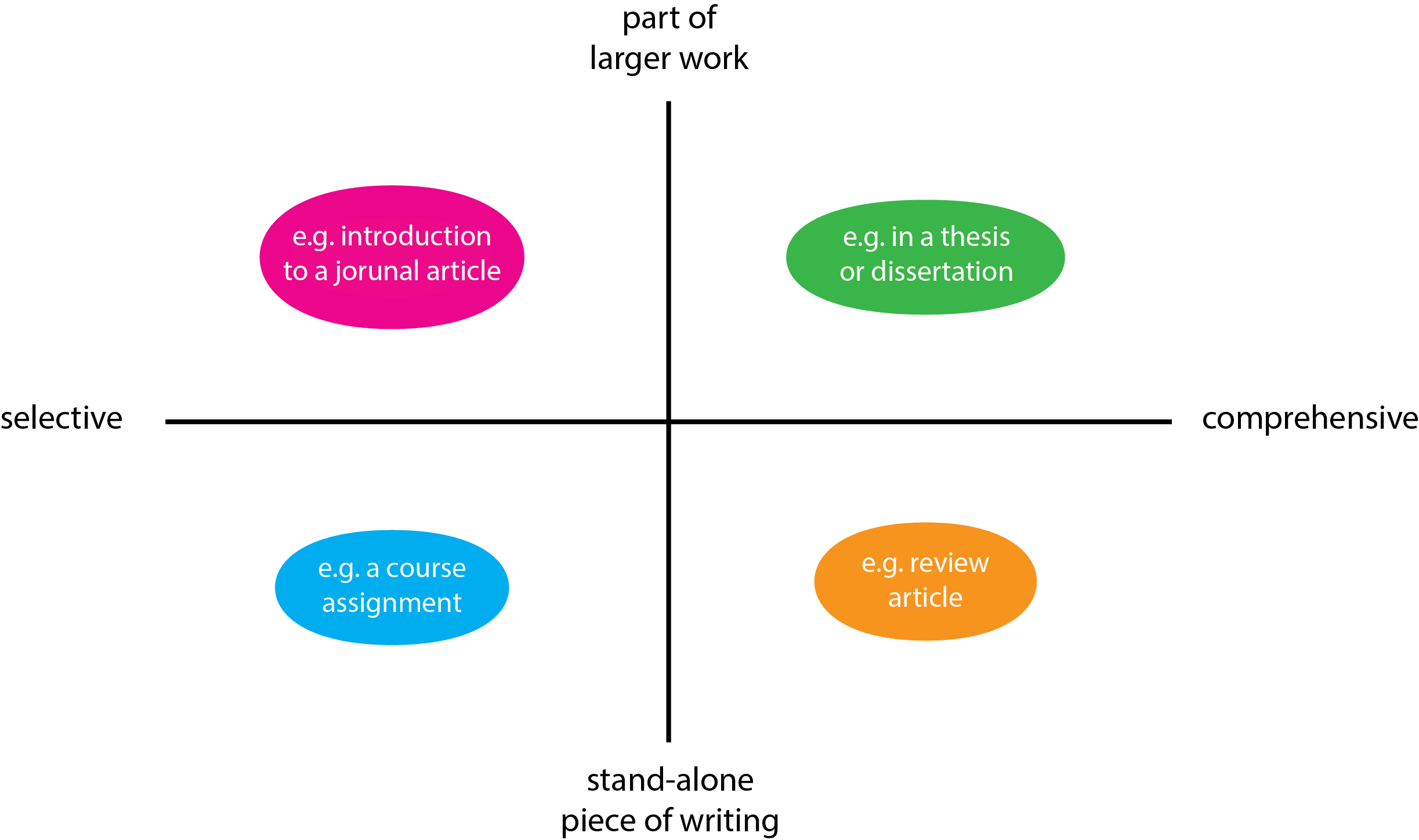Overview
Literature reviews are great resources for research projects in all disciplines, presenting the key ideas in a field, pointing to must-read articles, and sugesting directions for future research. How do you go about writing one, though? This page is a collection of resources and tips for creating your own literature review.
This first video takes you on an outer space journey with different disciplines at UCLA, introducing how to create a literature review and what you can do with it when it’s done.
The Process
The "Literature" in literature reviews refers to the body of scholarly research on a topic - including articles, books, datasets, and more. After you’ve gathered a mix of resources for your review, it’s tempting to summarize each one and call it a day. However, literature reviews are more than a collection of summaries: they analyze connections and disagreements between sources, identify gaps in the collective knowledge, and more. Check out the video below for more information:
Types of Literature Reviews
As mentioned in the first video, literature reviews can take different shapes based on your research needs. You can either have a narrow or broad focus, and the finished piece can stand on its own or be part of a bigger project.
 Image adapted from NCSU Libraries’ Graduate Student Literature Review Workshop.
Image adapted from NCSU Libraries’ Graduate Student Literature Review Workshop.
Skimming for What You Need
Adapted from UCLA Professor Snowden Becker's "How to Read an Article".
- Start at the ends. Important information is usually concentrated in the abstract, introduction, and conclusion of the piece. From this quick scan, you can likely tell if this resource is important to your research and merits inclusion in your literature review.
- Look for landmarks. Journal articles generally follow a set structure with titled subsections like Problem Statement or Research Methods & Design that allow you to skip to the content you need.
- Take notes as you go. While you may remember the central argument or findings of a resource now, after you look through a whole body of research you may lose the nuances of individual pieces. Important things to keep track of may include central ideas, research methods, referenced works, and refuted or counter-argued ideas.
Related Resources
About this tutorial
Authors
Caitlin Meyer, Taylor Harper, Shannon Roux
Contributors
Whitney Arnold, Joanna Chen Cham, Janet Goins, Leigh Harris, Nisha Mody, Renee Romero, Annelie Rugg, Mary Tran, Doug Worsham
Learning Outcomes
- Summarize literature reviews and their function in research
- Organize essential resources and data for literature review
- Choose literature review type according to research needs
- Locate information gaps for literature review to address